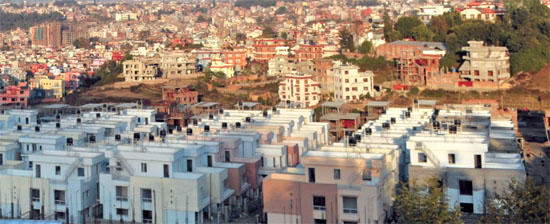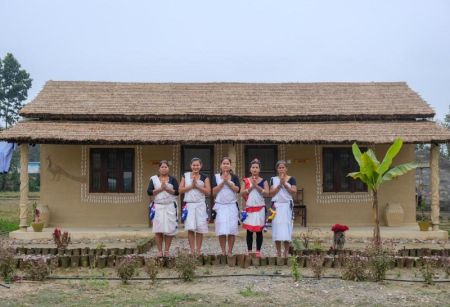
--By Angila Sharma
Housing sector that experienced heavy downfall during the previous years has lately shown signs of improvement. Major reason behind this improvement is increasing preference of customers towards community living and the corresponding improvement made in the housing sector to fulfil the needs of their targeted consumers. Along with the facilities provided by the developers, the shift from owning individual custom made homes is triggered also by the shortage of land in the valley.
Housing projects have been adding various facilities for their consumers and this has been attracting more people towards owning an apartment or a house in a housing colony. Earlier people sought to make their own home to satisfy their feeling of ownership. But, now, people look for apartments due to comfort and facilities.
Entrepreneurs state that the modifications in the housing sector have been a direct response to the facilities demanded and suggested by its existing and potential customers. One of this suggestions have been waiving off the charges for various facilities that the apartment and house owners had to pay when owning such facilities. They charge customers with some extra amount in the beginning and use the same money to cater their needs and support their living in those apartments and houses later on. This is a new concept in the sector and has been implemented in some of the projects. Entrepreneurs claim that there are around 20 new housing projects under construction this fiscal year.
However, due to some loopholes in the sector’s practices and also in the government policies, the housing sector has not been able to develop to its full capability. Firstly, the housing systems are quite congested and unorganised. “The housing sector is under the domination of the owners’ built system which comprises 97.74 percent of the sector while the remaining 2.26 percent belongs to the developers,” says Min Man Shrestha, general secretary at Nepal Land and Housing Developers’ Association.
“Nepal aims to become a developed country by 2022 and this is possible only if the housing sector is developed,” claims Shrestha. Housing sector is the face of development as it contributes in the sustenance of around 200 others industries such as construction material providers. “The sector should now be brought on track not only for the sustenance of other related industries but for the overall development of the country,” Shrestha added.
Entrepreneurs claim that the sector has been discriminated by the government and the current rules and regulations on multiple grounds. One of this discrimination is on interest rates. Housing entrepreneurs claim the interest rate for imports is only eight per cent, while the housing industry that sustains other 200 industries is charged 13 per cent interest rate. Banks apply unnecessary interest rates and Nepal Rastra Bank has remained mute on the issue.
Experts claim that the NRB along with the Ministry of Finance has to bring reforms in policies regarding the sector. Along with this, the fair market value for the housing sector recognised by banks is 60 per cent while in the other sectors it is 80 per cent. Another problem faced by this sector is lack of re-financing facility. Though entrepreneurs argue that they have been demanding for equality, their voices have been unheard.
From the fiscal year, foreigners are allowed to own housing property in Nepal. However, this has not been implemented till now. 20 per cent of a housing project can be sold to foreigners. Along with that, foreigners are allowed to buy apartments worth 200 thousand dollars. “Despite having agreed to all of the provisions, the government has not implemented these,” Shrestha says adding that implementation of this provision will help flow of foreign currency in the country which in turn will automatically help in boosting the economy.






















